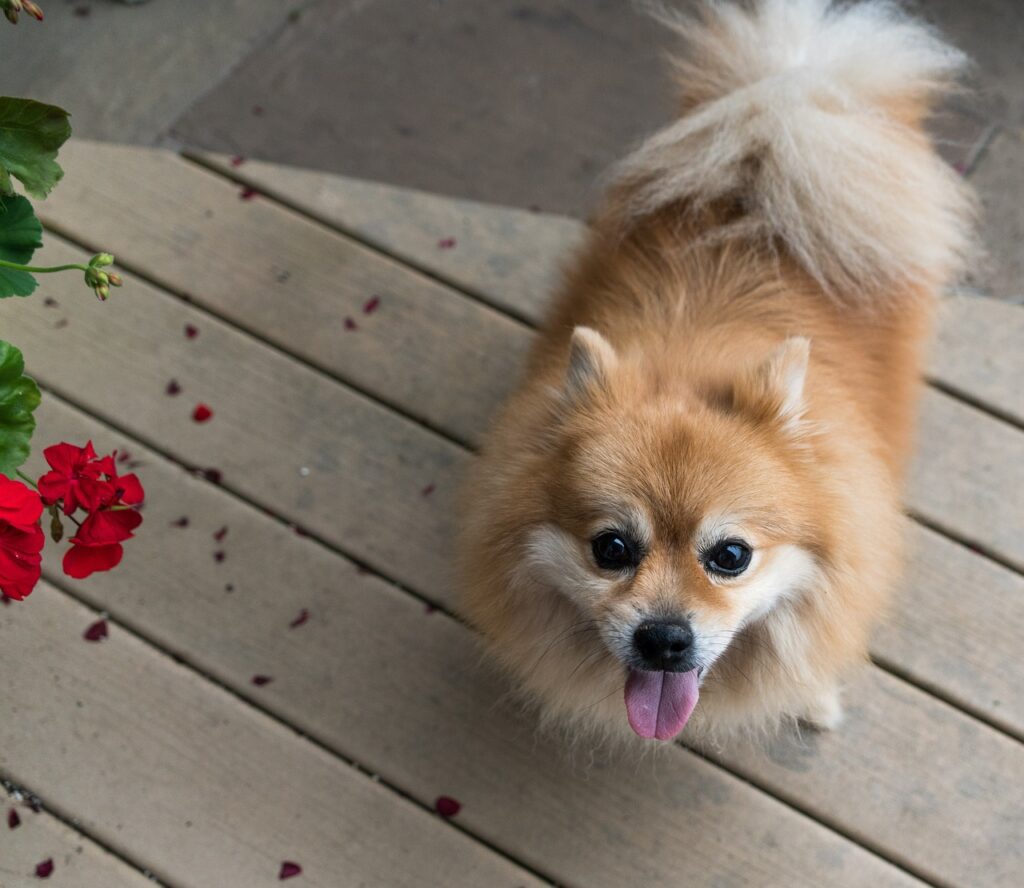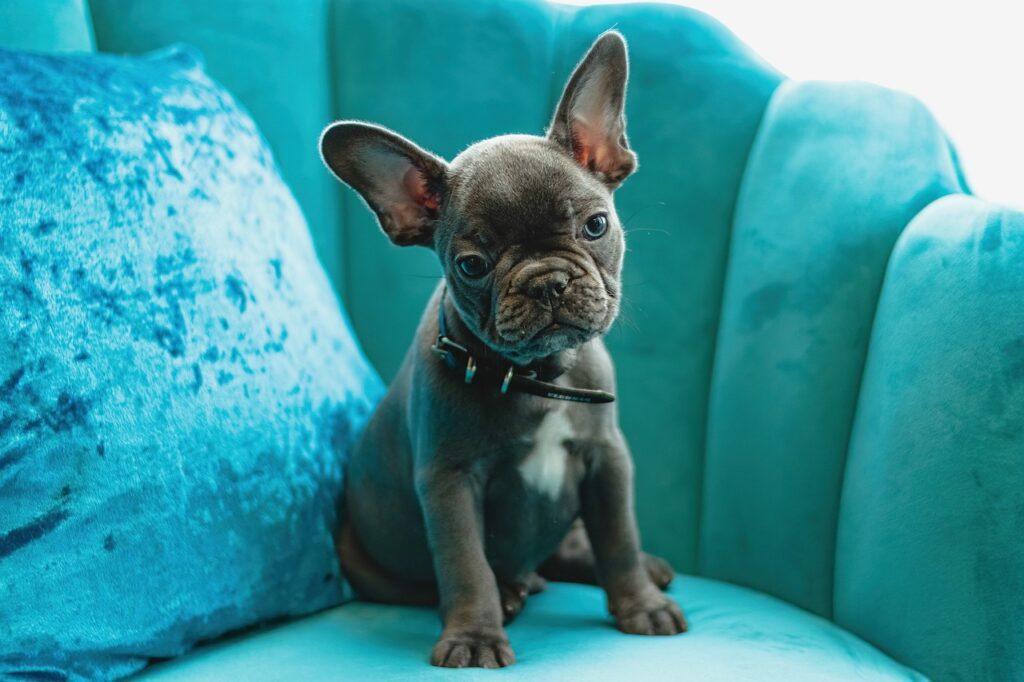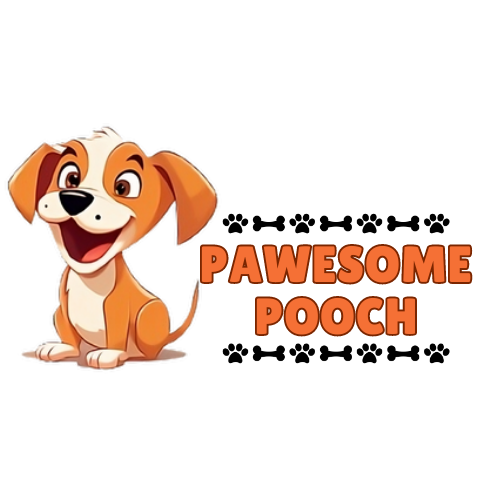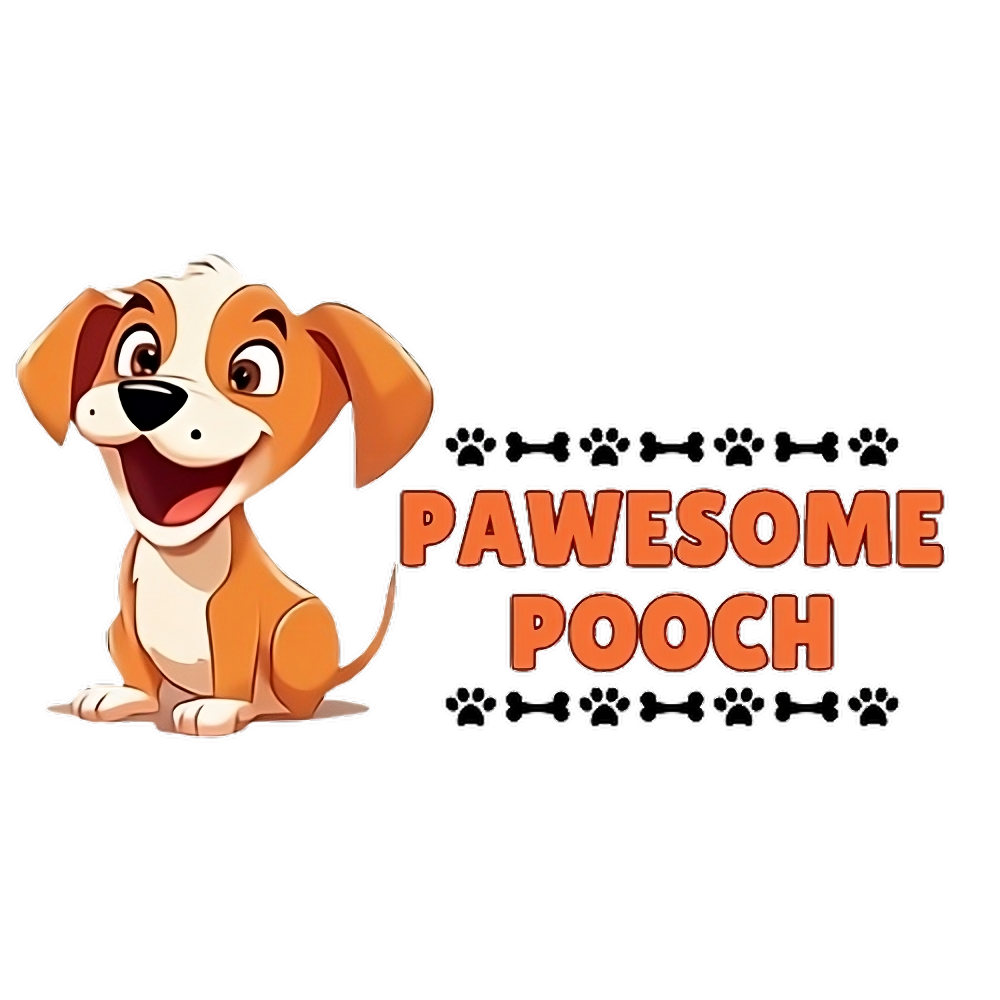
Are you a proud owner of a short-haired dog? If you are, then you know that despite their low maintenance reputation, even these breeds require some level of grooming. In this article, we will explore the various grooming needs of short-haired dog breeds, from regular brushing to occasional baths. Whether you’re a seasoned dog owner or new to the world of canines, this article will provide you with valuable insights and tips to keep your short-haired pup looking and feeling their best.

Basic Grooming
Brushing
Brushing your short-haired dog is an important aspect of basic grooming. Although short-haired breeds don’t require as much brushing as their long-haired counterparts, it still helps to remove loose hair and distribute natural oils throughout the coat. Regular brushing also stimulates the skin, promoting a healthy and shiny coat.
When brushing your short-haired dog, you can use a soft-bristle brush or a grooming mitt. Start by brushing in the direction of hair growth, moving from the head to the tail. Be gentle and avoid applying too much pressure, as this can cause discomfort for your furry friend. Don’t forget to pay attention to areas like the chest, underarms, and hindquarters.
Bathing
Bathing your short-haired dog is another essential part of their grooming routine. While they may not require frequent baths like long-haired breeds, bathing helps to keep their coat clean and free from dirt and odor. It’s recommended to bathe your short-haired dog once every 3-4 months or whenever they get particularly dirty or smelly.
When bathing your dog, use a gentle dog-specific shampoo that is suitable for their skin type. Wet your dog’s coat thoroughly, apply the shampoo, and lather it in gently. Rinse thoroughly to remove all the shampoo, as any residue can cause skin irritation. After bathing, towel-dry your dog and provide a warm and cozy spot for them to dry off completely.
Nail Trimming
Regular nail trimming is essential for the overall health and well-being of your short-haired dog. Overgrown nails can cause pain, discomfort, and even affect their ability to walk properly. Aim to trim your dog’s nails every 4-6 weeks, or whenever they start to touch the ground when standing.
When trimming your dog’s nails, use a pair of dog-specific nail clippers or a nail grinder. Take care not to cut the quick, which is the sensitive part inside the nail that contains blood vessels. If you’re uncertain, it’s best to consult a professional groomer or veterinarian for guidance. Positive reinforcement, such as treats or praise, can help your dog feel more comfortable during the nail trimming process.
Ear Cleaning
Proper ear cleaning is crucial to prevent ear infections and maintain your short-haired dog’s aural health. Although short-haired breeds are generally less prone to ear issues, it’s still important to check and clean their ears regularly.
To clean your dog’s ears, use a dog-specific ear cleaning solution and cotton balls. Gently lift your dog’s ear flap, and apply a few drops of the cleaning solution into the ear canal. Massage the base of the ear for a few seconds to help loosen any debris or wax. Wipe away the excess solution and debris using a cotton ball. Remember to never insert anything deep into your dog’s ear canal, as it can damage their delicate eardrum.
Dealing with Shedding
Shedding Frequency
Short-haired dog breeds are known for their moderate shedding. While they may not have as much hair as their long-haired counterparts, they still shed regularly throughout the year. The amount of shedding can vary depending on the individual dog and factors such as their health, diet, and seasonal changes.
To manage shedding, it’s important to understand your dog’s shedding frequency. Regular brushing helps to remove loose hair and minimize shedding around your home. Additionally, providing a balanced diet, regular exercise, and maintaining their overall health can contribute to healthier skin and coat, reducing excessive shedding.
Tools for Managing Shedding
To effectively manage shedding in short-haired breeds, there are various grooming tools available that can be beneficial. One commonly used tool is a deshedding brush or rake, specifically designed to remove loose hair from the undercoat without damaging the topcoat. These brushes often have fine, curved bristles that can effectively lift and remove the loose hair.
Another tool that can aid in managing shedding is a rubber grooming glove or mitt. These gloves have rubber bristles that attract and capture loose hair as you stroke your dog’s coat. The gentle massaging action of the glove not only helps with shedding but also stimulates blood circulation and promotes a healthier coat.
In addition to brushing, regular bathing can also help minimize shedding by removing loose hair and dead skin cells. Using a shampoo formulated to reduce shedding can further assist in managing your dog’s shedding.
Skin Care
Moisturizing
While short-haired dogs generally have less coat maintenance, their skin still requires attention to keep it healthy and moisturized. Dry and flaky skin can lead to discomfort and skin issues. Therefore, it’s essential to moisturize your short-haired dog’s skin regularly.
Using a dog-specific moisturizing spray or lotion can help keep your dog’s skin hydrated. Look for products that are free from harsh chemicals or fragrances that could potentially irritate their skin. Apply the moisturizer as directed, focusing on areas that are prone to dryness, such as the elbows, hocks, and belly.
Examining for Skin Issues
Regularly examining your short-haired dog’s skin can help identify any potential skin issues before they escalate. Look for signs of redness, inflammation, rashes, or any unusual bumps or lumps. Pay attention to the ears, armpits, groin area, and between the paw pads, as these places are more susceptible to skin problems.
If you notice any abnormalities, it’s best to consult with a veterinarian for a proper diagnosis and treatment plan. Early detection and intervention can help prevent more severe skin issues and ensure your dog’s overall well-being.
Coat Care
Professional Haircuts
While short-haired breeds may not require extensive coat grooming, occasional professional haircuts can help maintain their coat’s cleanliness and overall appearance. Professional groomers can trim the hair around sensitive areas, such as the eyes, ears, and paw pads, to prevent matting and hygiene issues.
Depending on your short-haired dog’s breed or individual needs, you can discuss with the groomer the best haircut styles or lengths that suit your dog’s lifestyle and comfort. Professional haircuts not only promote a well-groomed appearance but also contribute to better coat health and hygiene.
Keeping the Coat Clean
Even with short hair, maintaining a clean coat is important for your dog’s overall hygiene. Regular brushing, as mentioned earlier, helps to remove loose hair and distribute natural oils for a healthy coat. Additionally, wiping your dog’s coat with a damp cloth or using dog-specific grooming wipes can help remove any dirt or debris that may accumulate on their fur.
If your short-haired dog enjoys outdoor activities, they may occasionally get into muddy or messy situations. In such cases, it may be necessary to give them a quick rinse or wipe down to remove any stubborn dirt or odor. It’s important to use dog-specific products and avoid harsh human shampoos, as they can potentially irritate your dog’s skin.

Dental Care
Brushing Teeth
Oral hygiene is essential for overall canine health, regardless of hair length. Proper dental care for your short-haired dog involves regular tooth brushing. Aim to brush your dog’s teeth at least two to three times a week, using a dog-specific toothbrush and toothpaste formulated for canines.
Start by introducing your dog to the toothbrush and toothpaste gradually, allowing them to sniff and taste the toothpaste. Once your dog is comfortable, lift their lips and gently brush their teeth using a circular motion. Focus on the gum line and all tooth surfaces. Be patient and offer positive reinforcement to make the experience more pleasant for your furry friend.
Dental Chews and Treats
In addition to regular tooth brushing, dental chews and treats can help maintain your short-haired dog’s oral health. Chewing on specially designed dental chews or treats can help remove plaque and tartar buildup, reducing the risk of dental issues such as gum disease or tooth decay.
When choosing dental chews or treats, opt for those that are approved by veterinary professionals and specifically formulated to promote dental health. Avoid giving your dog hard objects, such as bones or antlers, as these can potentially damage their teeth. Always supervise your dog while they enjoy their dental treats to ensure their safety.
Eye Care
Routine Cleaning
Keeping your short-haired dog’s eyes clean is important to prevent eye infections and maintain overall eye health. Routine cleaning can help remove any dirt, debris, or discharge that may accumulate around the eyes.
To clean your dog’s eyes, use a clean and moistened cotton ball or a soft, lint-free cloth. Gently wipe around the eyes, starting from the inner corner and moving outward. Avoid touching the eye itself or using any harsh substances that can irritate the delicate eye tissue. If your dog’s eyes appear red, swollen, or they have excessive discharge, it’s recommended to consult with a veterinarian.
Inspecting for Eye Problems
Regularly inspecting your short-haired dog’s eyes can help detect any potential eye problems early on. Look for signs of redness, excessive tearing, cloudiness, or any visible abnormalities. Additionally, pay attention to your dog’s behavior, such as excessive blinking, pawing at the eyes, or squinting, as these may indicate discomfort or an underlying eye issue.
If you notice anything concerning or your dog is displaying any persistent eye symptoms, it’s crucial to seek veterinary attention promptly. Early intervention can help prevent further complications and ensure your dog’s eye health.

Paw and Nail Care
Trimming Nails
Regular nail trimming is important for your short-haired dog’s comfort and mobility. Overgrown nails can cause pain and potential joint or posture issues. Aim to trim your dog’s nails every 4-6 weeks, or whenever they start to touch the ground when standing.
When trimming your dog’s nails, use a pair of dog-specific nail clippers or a nail grinder. Start by getting your dog comfortable with having their paws handled and gently touch their nails to get them accustomed to the sensation. Trim a small amount of the nail at a time, avoiding the quick, which is the sensitive part containing blood vessels. If you’re unsure or uncomfortable with trimming your dog’s nails, seek the assistance of a professional groomer or veterinarian.
Paw Pad Maintenance
Caring for your short-haired dog’s paw pads is crucial, as they provide protection and stability while walking or running. Regularly inspect your dog’s paw pads for any signs of cracking, dryness, or injury. If you notice any issues, consult with a veterinarian for appropriate treatment.
To keep your dog’s paw pads in good condition, you can apply a dog-specific paw balm or moisturizer. These products help to hydrate and protect the paw pads from dryness and potential injuries. Additionally, during extreme weather conditions, such as hot pavement or icy surfaces, consider using protective booties to safeguard your dog’s paw pads from burns or frostbite.
Anal Gland Care
Understanding Anal Glands
Anal glands, also known as scent glands, are small glands located on either side of your short-haired dog’s anus. These glands release a distinctive scent when your dog defecates, serving as a form of communication or territorial marking.
While some dogs naturally express their anal glands during bowel movements, others may require manual expression to prevent discomfort or potential complications. It’s important to understand your individual dog’s anal gland needs and consult with a professional groomer or veterinarian for guidance on maintaining their anal gland health.
Expression of Anal Glands
If your short-haired dog requires manual expression of their anal glands, it’s recommended to seek professional assistance. A groomer or veterinarian can safely and effectively express the glands to ensure they are emptied without causing any harm or discomfort to your dog.
Signs that your dog’s anal glands may need expressing include scooting their bottom along the ground, excessive licking or biting at the area, or a strong and unpleasant odor coming from their rear end. If you notice any of these signs, it’s best to schedule a vet check-up or grooming appointment to address the issue promptly.
Nose Care
Cleaning the Moisture
Short-haired dog breeds often have sensitive noses that may require occasional cleaning to remove excess moisture or dirt build-up. Use a clean, damp cloth or dog-specific wipes to gently wipe your dog’s nose. Be careful not to rub too harshly, as this may cause irritation or discomfort.
Avoid using any scented products or harsh chemicals on your dog’s nose, as these can potentially irritate the sensitive skin. If you notice any unusual discharge, dryness, or cracking, consult with a veterinarian for proper diagnosis and guidance.
Addressing Dry or Cracked Noses
Dryness or cracking of the nose can occur in short-haired dogs, especially during certain weather conditions or due to underlying health issues. To address a dry or cracked nose, you can apply a dog-specific nose balm or moisturizer. These products help to hydrate and protect the nose, promoting healing and preventing further damage.
If your dog’s nose remains dry or cracked despite using moisturizing products, it’s recommended to consult with a veterinarian. They can determine if there are any underlying health concerns that need attention or offer additional guidance to address the issue effectively.
Grooming Tools
Brushes and Combs
When it comes to grooming short-haired dog breeds, selecting the right brushes and combs is essential. While they may not require as much brushing as long-haired breeds, using the appropriate tools can still enhance their coat’s health and appearance.
For short-haired dogs, a soft-bristle brush or a grooming mitt is typically sufficient for regular brushing. These tools help remove loose hair and stimulate the skin without damaging the coat. Additionally, a fine-toothed comb can be useful for gentle detangling and eliminating any remaining loose hair.
Clippers and Trimmers
While short-haired dogs may not require extensive trimming like long-haired breeds, certain areas may still benefit from occasional trimming. For instance, hair around the eyes, ears, and paw pads can grow and potentially cause irritation or hygiene issues if not properly maintained.
Investing in a pair of dog-specific clippers or trimmers can make grooming these areas easier and safer. However, if you’re unsure or uncomfortable with trimming your dog’s hair, it’s best to seek professional groomer assistance. They have the expertise and experience to handle the grooming process effectively, ensuring your dog’s comfort and safety.
In conclusion, grooming short-haired dog breeds involves various aspects to keep them clean, healthy, and comfortable. From regular brushing and bathing to nail trimming and ear cleaning, each element contributes to their overall well-being. By incorporating these grooming practices into your routine and seeking professional assistance when needed, you can help your short-haired dog look and feel their best. Remember to always approach grooming with a friendly and gentle tone, making it a positive and enjoyable experience for both you and your furry friend.

